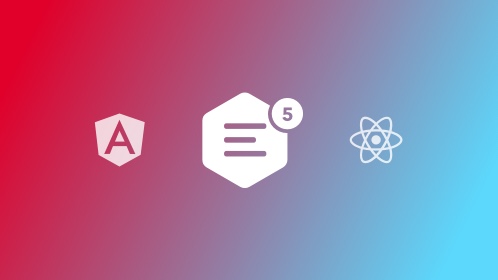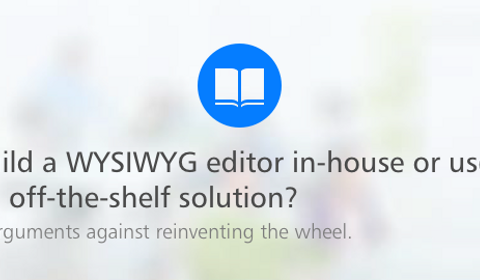10 Tips on How to Pick a WYSIWYG Editor

Picking a WYSIWYG editor for your project can be a daunting task. Choices abound with a few major players like CKEditor dominating the market. HTML editors can give your website an additional layer of usability, but adding third-party components to any online project should be done with great care. The Web is ever-evolving, which means your site must also be in step with the times or risk opening itself up to unforeseen problems.
The following article explains what to consider before choosing a WYSIWYG editor. Hopefully it will make your experience with online rich text editors pleasant and productive.
Is it Open Source or commercial?
The first thing you should consider is whether it’s Open Source or commercial or a combination of both. There are different types of Open Source licenses, so please familiarize yourself with them.
Open Source applications tend to be more stable because they often have a larger user base and more testers. This peer-review process subjects the app to more rigorous tests and promotes a wider discourse on how to improve things. Open Source apps are better adapted to current trends. Of course, this is heavily dependent on the editor’s popularity.
The negative side of strictly Open Source apps is that support usually tends to be below commercial standards. This leads us to the next point…
Does it offer commercial licenses?
If there’s a commercial enterprise behind an Open Source editor, like CKSource is behind CKEditor, there’s a good chance it will have a stable future and receive regular maintenance. It will also be forced to adapt to professional standards of excellence. Companies requiring commercial-level support won’t be entirely dependent on community assistance. They will also have the option of hiring expert help.
Who is using it?
Checking the list of past and current users/clients will not only give you an idea of how popular the app is, but also show you how the editor can be implemented. If the editor offers commercial licenses and support, there’s a good chance its team will have experience dealing with projects similar to yours. Additionally, if the client base includes large companies, you can expect a product of higher standard.
Is it accessible?
Speaking of higher standards, accessibility might not seem like an important topic, but if major corporations or government institutions intend to use your product, it will have to meet certain accessibility standards. Some WYSIWYG editors like CKEditor take accessibility very seriously while others do not.
Is it stable?
Give the editor a quick test run in various browsers. Common issues creep up in functionalities like copy-pasting, tables, images, lists, caret positioning, etc. Sometimes all it takes is a few non-standard maneuvers to show an editor’s ugly side. Open Source apps have the additional advantage of letting you test the editor before committing to a commercial license.
Is it updated regularly?
Obviously, frequent updates mean better stability, but they also show that the core development team is listening to its users. It’s a principle called “Release Early, Release Often”, which aspires to the idea that “a tight feedback loop between developers and testers or users” is created through frequent releases, resulting in applications better tuned to current realities. A good WYSIWYG editor should have an update once every month or so.
Is it secure?
If the app has an Open Source version, offers commercial licenses and is updated regularly, there’s a pretty good chance it will be secure. The editor will be under constant scrutiny and have a paid staff whose job will be to fix issues and release regular patches. Your project will be using an application that’s maintained on two fronts.
What technology is it based on?
WYSIWYG editors can be designed using a variety of technologies: JavaScript, Java, jQuery, etc. Familiarize yourself with what suits you best. Each language has its advantages and disadvantages.
Pure JavaScript apps tend to be easier to adopt and perform better. jQuery is popular nowadays but you might have a hard time finding a developer for unorthodox projects. jQuery-dependent editors also require additional libraries whereas pure JavaScript apps don’t. Some technologies like Java are dependent on native browser technology, bringing disadvantages for both developers and end-users alike.
Does it have an active community?
An active community, be it in the forums or add-ons repository, will clue you in on the amount of users actively maintaining the project - people who can give you advice should you run into problems. It will also give you access to various third-party plugins not included in the editor by default. A large add-ons repository is a definite sign that an editor is healthy and worth investing time, money and effort into.
Is it customizable?
This one is tricky. Being too customizable isn’t always a good thing. If an app has three features with a true or false setting, developers have to run eight various tests to make sure everything works fine. This amount increases exponentially with each additional feature because all possible combinations have to be tested against each other.
On the other hand, not being customizable usually means additional costs to get the editor working as desired. You can check how an application is configurable by the size of its API. Unless the team maintaining the editor has plenty of resources, anything above 200 options might be too much.
Choose Wisely
There are obviously countless other important factors that may affect your choice, but every newcomer to the WYSIWYG scene should at least consider the above. What might work for one project might not work for another, so the best way to pick an editor is to try them out for yourself. Most are either Open Source or have optimized demo pages online. So now that you know what to look for, start experimenting!
See related articles:


